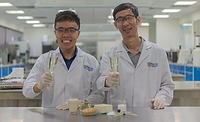Similar to efforts to understand the structure of the human genome, researchers have examined individual fragments of the genome of Listeria monocytogenes serotype 4b, the strain responsible for most listeriosis outbreaks and 50 percent of sporadic cases. The next step is to assemble the fragments into a complete genomic map, so that researchers can better understand how the bacterium persists in animals, in and on foods, and in processing plants. Researchers also hope to determine how the bacterium affects people.
USDA says the research information is critical to regulatory agencies such as its Food Safety Inspection Service (FSIS) for creating and implementing regulations for safe processing and handling of ready-to-eat foods.
USDA recently proposed food safety measures applicable to all ready-to-eat and all partially heat-treated meat and poultry products, as well as environmental testing requirements intended to reduce the incidence of Listeria monocytogenes in processed meat and poultry plants. The notice regarding the proposed rule, "Performance Standards for the Production of Processed Meat and Poultry Products," appeared in the July 3 edition of the Federal Register. The comment period on the proposal closes Sept. 10.
